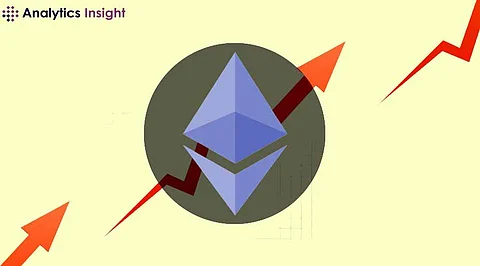

Ethereum Price Prediction for 2025: The potential for Ethereum to hit new all-time highs remains a subject of significant debate among analysts. Ethereum has experienced both volatility and transformative shifts in recent years. Current developments and trends such as inflation concerns, staking policy changes, and new ETF launches are driving market sentiment. Reviewing historical price patterns, alongside the latest news surrounding Monochrome Asset Management’s new Ethereum ETF, offers valuable insights into whether Ethereum could achieve new highs by 2025.
The long-term Ethereum price chart highlights several key price points over the years. Ethereum reached its first major peak at $1,440 in 2018. A bearish period followed, bringing the price down to $81.79 by late 2018.
A slow recovery emerged until 2020 when Ethereum began gaining traction, reaching $4868 in 2021—its highest point to date. However, the price corrected after this peak, touching $881.56 in 2022.
The most recent recovery shows Ethereum climbing to $4,093.92 earlier in 2023 before settling around $2,534 as of October 2024. Several pivot points, such as $2,141.54 and $1,521.00, serve as recent support and resistance levels. The monthly chart confirms an ongoing consolidation phase, with Ethereum still below the previous high of $4,868, reflecting the market’s hesitation in pushing toward new highs.
Monochrome Asset Management is launching the first spot Ethereum ETF on the Cboe exchange in Australia. This ETF, labeled as IETH, will allow retail and institutional investors to gain exposure to Ethereum without directly owning the asset. The Bitcoin ETF by the same firm, IBTC, launched in August 2023, has amassed $15 million since its inception.
Ethereum ETFs play a vital role in enhancing the legitimacy of the cryptocurrency in traditional financial markets. The IETH fund will allow seamless transfer between crypto wallets and brokerage platforms. This accessibility broadens participation, potentially increasing Ethereum’s demand. In-kind subscriptions for Ethereum holdings also offer greater tax efficiency, encouraging long-term investments. Custody services by BitGo and Gemini will provide enhanced security, which could attract conservative investors.
Ethereum's inflation rate recently reached 0.74%, raising concerns over its status as "ultrasound money." Ethereum's initial promise revolved around reduced supply post-EIP-1559, which burns a portion of transaction fees. However, on-chain activity has decreased due to the rise of layer-2 solutions like Arbitrum and Optimism. These off-chain solutions have diverted transaction volume away from Ethereum’s mainnet, reducing the burn rate.
If inflationary pressures persist, Ethereum’s price momentum could face headwinds. However, growth in layer-2 networks may attract more developers and users, ultimately benefiting Ethereum’s ecosystem. Investors and traders will watch whether Ethereum’s network can reclaim the deflationary narrative through increased activity or changes to its monetary policy.
Staking remains a key part of Ethereum’s ecosystem since its shift to Proof of Stake (PoS). Vitalik Buterin has advocated for lowering the minimum requirement for solo staking from 32 ETH to a range between 16 and 25 ETH. Lowering the threshold would decentralize Ethereum further by encouraging smaller investors to participate in staking without relying on staking pools.
Decentralized staking reduces risks associated with large staking providers and pools. More participation could stabilize the network and improve investor sentiment. However, reducing the staking requirement may lead to an increase in selling pressure from validators, creating potential volatility.
The decline in NFT trading volumes has also impacted Ethereum's price dynamics. Major NFT projects like CryptoPunks and Bored Ape Yacht Club reported a significant drop-in trading activity. Data shows that NFT trading on Ethereum fell by 47.7% in September 2024. Lower NFT demand reduces transaction fees, contributing to the decline in ETH burns and weakening Ethereum’s deflationary characteristics.
NFTs represent an important component of Ethereum’s utility. A rebound in NFT interest could revitalize Ethereum’s mainnet activity. Without a recovery in NFT demand, Ethereum may rely on other use cases, such as decentralized finance (DeFi) applications, to maintain its growth trajectory.
The short-term Ethereum chart reveals positive momentum. MACD (12,26) on the 30-minute chart shows the blue line crossing above the orange signal line, indicating bullish momentum. The MACD histogram supports this trend, with green bars suggesting increasing buying pressure. Ethereum recently broke above the $2,500 resistance, supported by a volume surge.
The Relative Strength Index (RSI) on the daily chart shows a reading of 54.99, slightly above neutral. This suggests Ethereum is neither overbought nor oversold, indicating room for further upside. A sustained move above the $2,600 level could spark additional buying interest, targeting resistance around $3,000.
Several factors point toward a positive outlook for Ethereum in 2025. The launch of Ethereum ETFs will drive institutional interest, providing liquidity and improving market stability. If inflation concerns are addressed through increased on-chain activity or staking policy adjustments, Ethereum could regain its deflationary narrative. A successful recovery in the NFT market or further adoption of DeFi could also act as catalysts.
However, challenges remain. Ethereum’s ability to handle inflationary pressures and increase participation in staking will shape its future trajectory. Regulatory developments in major markets, such as the U.S. and Europe, may also influence institutional adoption.
Ethereum has positioned itself as a leading cryptocurrency with strong fundamentals, but the road to a new all-time high will require overcoming inflationary concerns, reviving on-chain activity, and fostering decentralized staking. With ETFs like IETH launching and technical indicators showing early signs of strength, Ethereum may build the momentum necessary to challenge its previous highs. Achieving a new all-time high in 2025 depends on market conditions, technological improvements, and sustained adoption across various sectors.
